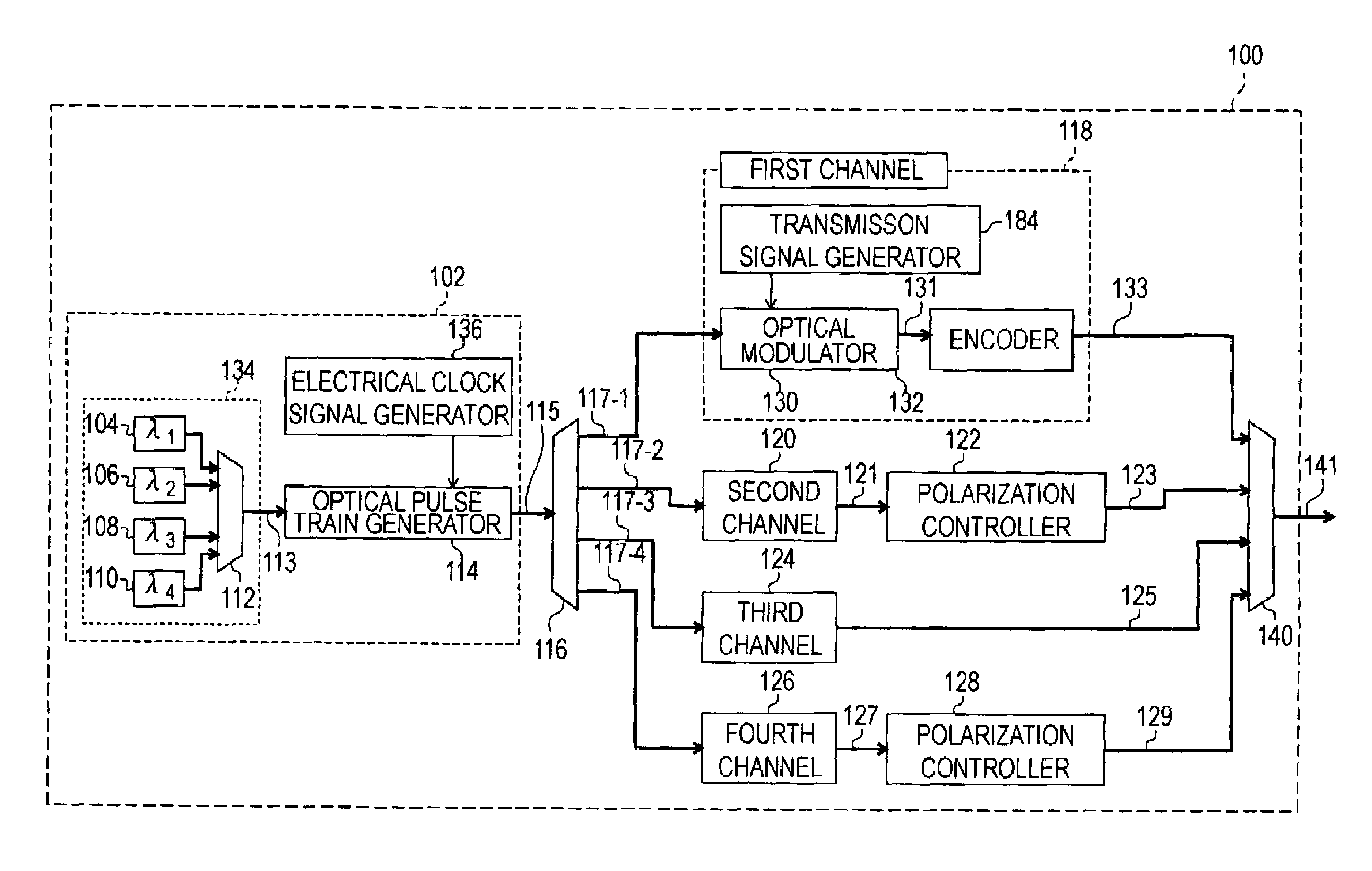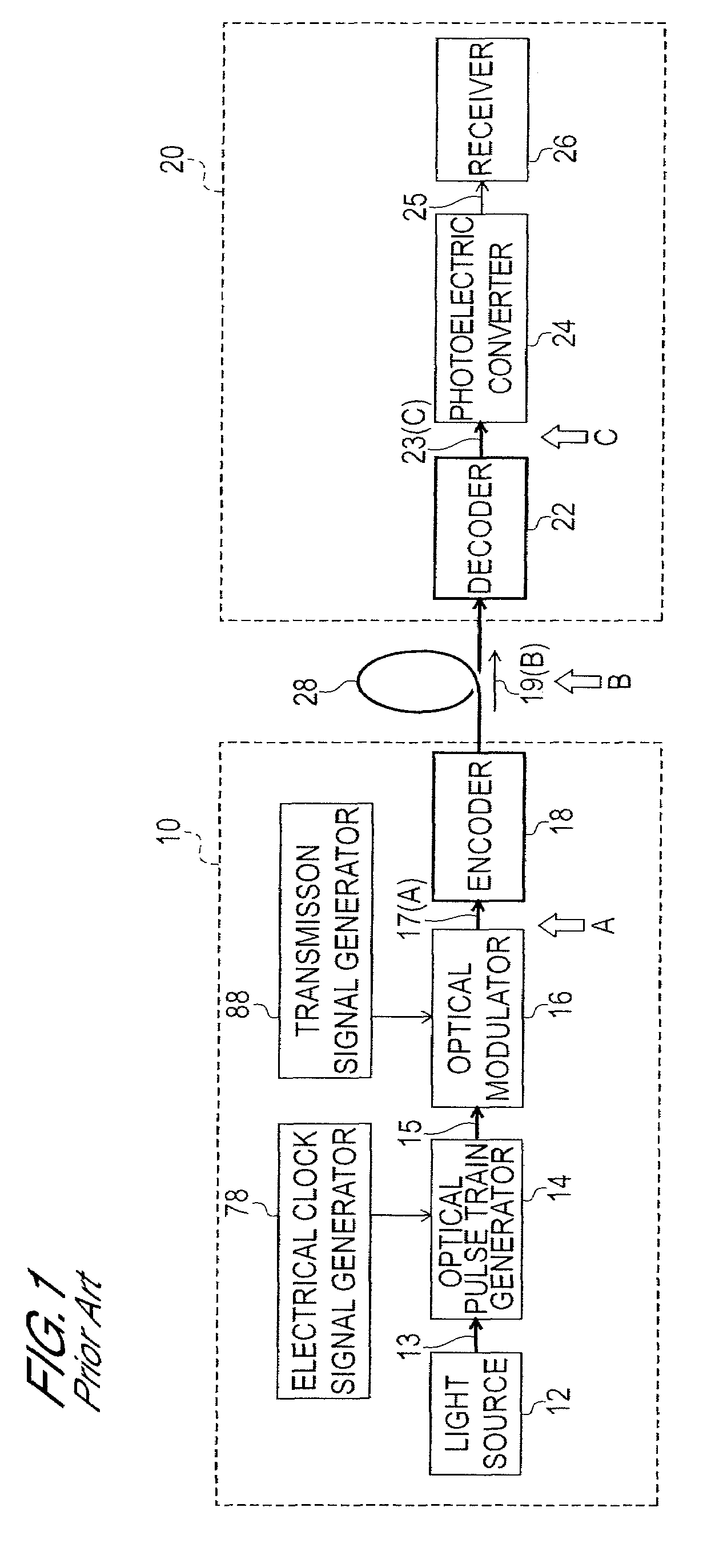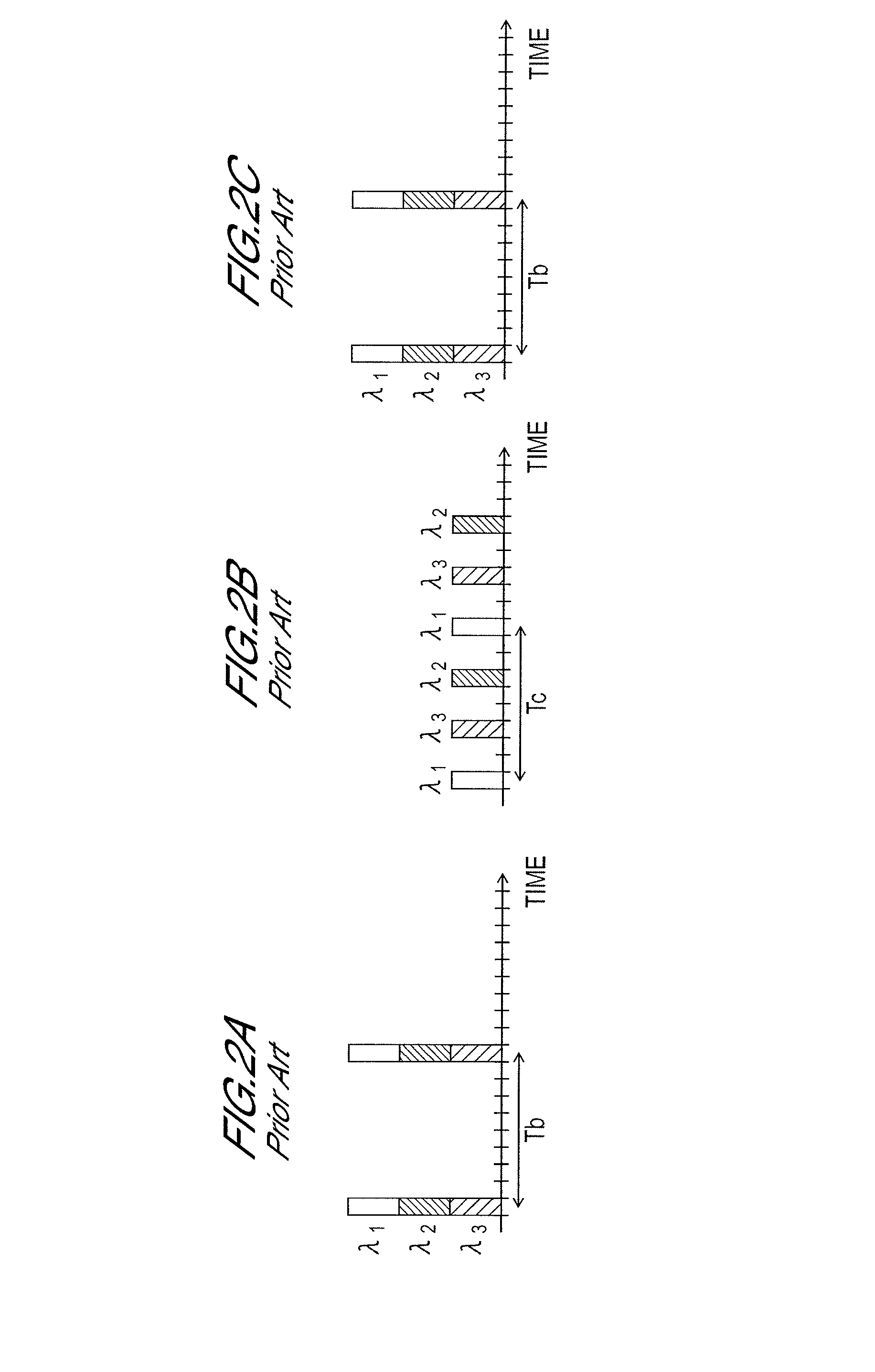Optical code division multiplexing transmission/reception method and optical code division multiplexing transmission/reception device
a transmission/reception device and optical code technology, applied in the field of optical communication devices, can solve the problems of beat noise, inability to completely eliminate cross-correlated waveform components, etc., and achieve the effect of higher s/n ratio
- Summary
- Abstract
- Description
- Claims
- Application Information
AI Technical Summary
Benefits of technology
Problems solved by technology
Method used
Image
Examples
first embodiment
[0121]The optical code division multiplexing transmission / reception method of a first invention, and the structure and operation of a device to implement this method, are explained referring to FIG. 8 and FIG. 9. FIG. 8 is a summary block diagram of the transmission unit of a device to implement the optical code division multiplexing transmission / reception method of the first invention. FIG. 9 is a summary block diagram of the reception unit of a device to implement the optical code division multiplexing transmission / reception method of the first invention, or of a second invention, described below. In FIG. 8 and FIG. 9, a case is shown in which the number of channels multiplexed is four; however, the following explanation is clearly not limited to the case of four channels, but obtains similarly for other numbers of channels.
[0122]As shown in FIG. 8, the transmission unit 100 comprises an optical pulse train generation unit 102, optical splitter 116, first channel encoded optical p...
second embodiment
[0159]The optical code division multiplexing transmission / reception method of a second invention, and the structure and operation of a device to implement this method, are explained referring to FIG. 11 and FIG. 9. FIG. 11 is a summary block diagram of the transmission unit of a device to implement the optical code division multiplexing transmission / reception method of the second invention; FIG. 9 is a summary block diagram of the reception unit. In FIG. 11 and FIG. 9, a case is shown in which the number of channels multiplexed is four; but the following explanation is clearly not limited to a case of four channels, but applies to other cases as well.
[0160]As shown in FIG. 11, the transmission unit 200 comprises an optical pulse train generation unit 202, optical splitter 216, first channel encoded optical pulse signal generation unit 218, second channel encoded optical pulse signal generation unit 220, third channel encoded optical pulse signal generation unit 224, fourth channel e...
PUM
 Login to View More
Login to View More Abstract
Description
Claims
Application Information
 Login to View More
Login to View More - R&D
- Intellectual Property
- Life Sciences
- Materials
- Tech Scout
- Unparalleled Data Quality
- Higher Quality Content
- 60% Fewer Hallucinations
Browse by: Latest US Patents, China's latest patents, Technical Efficacy Thesaurus, Application Domain, Technology Topic, Popular Technical Reports.
© 2025 PatSnap. All rights reserved.Legal|Privacy policy|Modern Slavery Act Transparency Statement|Sitemap|About US| Contact US: help@patsnap.com



